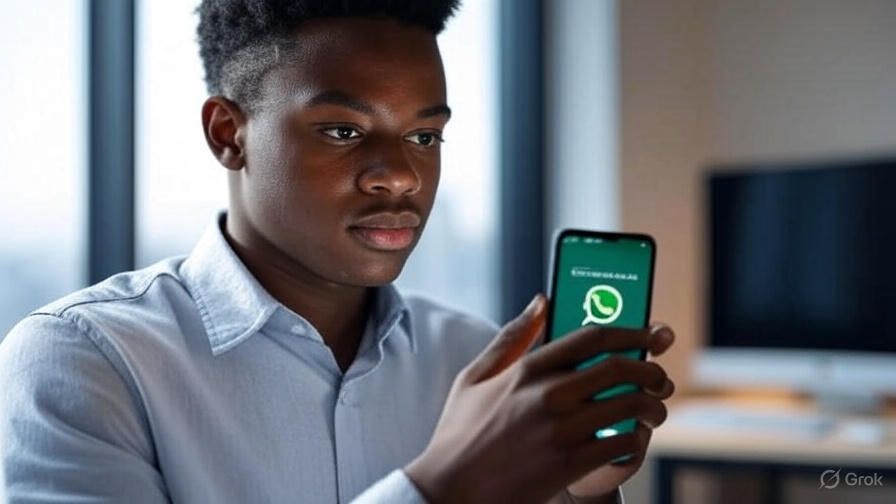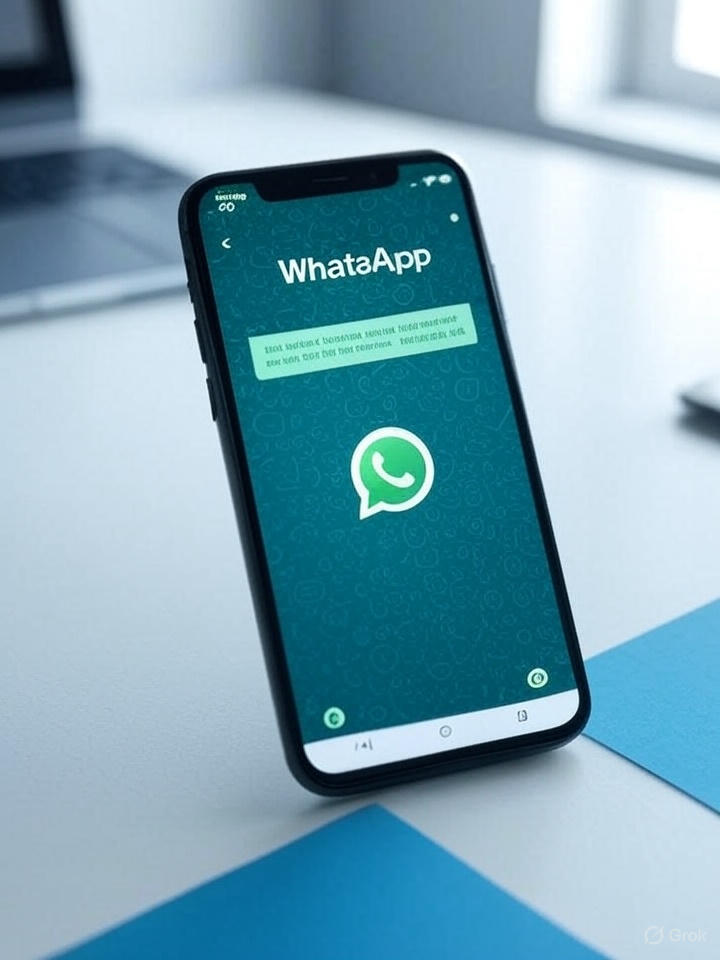Smart WhatsApp Per-Message Pricing Marketing Strategies for 2025 and Beyond
In our previous article, How WhatsApp Per-Message Pricing is Changing How Businesses Market in 2025, we explored the fundamentals of WhatsApp’s evolving pricing model and its initial impact on marketing approaches.
As we move further into 2025—post the major shift to true per-message billing on July 1st—this follow-up dives deeper into advanced, actionable strategies to thrive under this system.
With over 2 billion users, WhatsApp remains a powerhouse for customer engagement, but the pay-per-message structure demands even smarter tactics to optimize costs, boost ROI, and drive sustainable growth.
Whether you’re refining your current campaigns or scaling for the future, this guide builds on our earlier insights with updated pricing details, cutting-edge techniques, and forward-looking trends.
Let’s turn per-message pricing from a challenge into a competitive edge.
What’s the Updated WhatsApp Per-Message Pricing Model in 2025

Since July 1, 2025, WhatsApp Business Platform has fully transitioned from conversation-based to whatsapp per-message pricing, charging businesses for each delivered message based on their WhatsApp Business Account (WABA) timezone.
This change, announced by Meta, aims to align costs more closely with actual usage while lowering rates in key categories to make it more accessible.
Here’s a quick breakdown of the model:
#1. Message Categories and Billing:
- Marketing Messages: Billable anytime; used for promotions, offers, or re-engagement. Rates start from $0.01–$0.15 per message, varying by region.
- Utility Messages: For post-purchase info like order updates or account alerts. Free within a 24-hour Customer Service Window (CSW) or 72-hour Free Entry Point (FEP) window; billable otherwise. Reduced rates in 2025 make them more affordable.
- Authentication Messages: For one-time passcodes or verifications. Similarly free in CSW/FEP; billable outside, with lowered international rates in markets like Egypt, Nigeria, and South Africa.
- Service Messages (non-template, free-form replies): Completely free, but only within an open CSW initiated by the customer.
#2. Country-Based Rates and Volume Tiers: Costs depend on the recipient’s country code, with lower rates in high-volume markets like India ($0.005–$0.01 for utility) and higher in the US or Europe ($0.03–$0.06).
New volume tiers reward high-usage businesses with discounts—e.g., tiers based on monthly messages sent, reducing costs by up to 20% for large-scale operations.
#3. Free Tiers and Windows: Businesses get 1,000 free service conversations monthly (increased from prior limits), plus free messages in CSW/FEP to encourage responsive, customer-initiated interactions.
This model rewards efficiency: focus on high-value, targeted messages to minimize bills while maximizing engagement. Poorly optimized campaigns can inflate costs, but strategic use can yield 3–5x higher ROI than traditional channels like email or PPC.
How Per-Message Pricing Continues to Reshape WhatsApp Marketing
Building on our earlier discussion, the full rollout has amplified shifts toward quality over quantity. Businesses are now prioritizing conversational depth, with 2025 data showing a 25% increase in automation adoption to handle routine interactions without racking up charges.
Key impacts include:
- Cost Discipline Drives Innovation: Every message is scrutinized, leading to a 30% rise in personalized content that boosts open rates to 98% (vs. email’s 20%).
- Conversational Commerce Boom: With free service replies, brands are extending CSWs to guide users from query to purchase, increasing conversions by 15–20%.
- Data and AI Integration: Analytics tools are essential for tracking delivery, opens, and blocks, helping refine strategies in real-time.
In essence, per-message pricing isn’t a barrier—it’s a catalyst for leaner, more effective marketing that aligns with customer preferences for relevant, timely interactions.
Advanced Strategies to Optimize WhatsApp Marketing Under Per-Message Pricing

Drawing from our top 7 optimization tips in the original post, here we expand with 2025-specific tactics, incorporating AI, integrations, and cost-saving hacks.
These build on hyper-personalization, automation, and analytics while addressing the new model’s nuances.
#1. Master Hyper-Personalization with AI-Driven Segmentation
Go beyond basic variables: Use AI tools integrated with WhatsApp API (e.g., via BSPs like Twilio or AiSensy) to analyze customer data for dynamic content.
- Tactic: Segment by behavior (e.g., frequent browsers vs. one-time buyers) and predict needs with AI—send utility messages like “Your reorder of [product] is due—replenish now?” within free windows.
- Cost Tip: Limit marketing messages to high-intent segments, reducing spend by 40% while lifting CTR by 30%.
- Example: An e-commerce brand uses purchase history to send personalized restock alerts, recovering 20% of abandoned carts for free in CSWs.
#2. Scale Automation for Cost-Efficient Workflows
Automation remains key, but 2025 emphasizes hybrid bots that seamlessly hand off to humans.
- Tactic: Set up multi-step flows for abandoned carts (e.g., reminder at 1 hour, discount at 24 hours) using tools like WATI or Retainful. Classify as utility where possible to leverage free tiers.
- Cost Tip: Automate 70–80% of interactions to stay within free service limits; monitor block rates under 2% to avoid penalties.
- Example: A retail chain automates order tracking, saving $0.01 per message by keeping replies in CSWs.
#3. Target High-Value Segments with Precision Retargeting
Focus budgets on VIPs, now easier with lowered utility rates.
- Tactic: Integrate CRM data to identify high-LTV customers; retarget via Click-to-WhatsApp ads, transitioning to free service chats.
- Cost Tip: Use FEP windows for free follow-ups, boosting conversions by 20–40% without extra charges.
- Example: A SaaS company sends upsell offers to active users, achieving 25% higher retention at minimal cost.
#4. Maximize Impact with Rich, Interactive Media
Rich media still packs a punch, but optimize for engagement to justify costs.
- Tactic: Embed videos, carousels, or quick-reply buttons in marketing templates; test A/B variations for higher response rates.
- Cost Tip: Bundle info into fewer messages (e.g., one interactive template vs. multiple texts) to cut bills by 15%.
- Example: A restaurant shares menu videos with “Reserve Now” buttons, increasing bookings by 50%.
#5. Leverage Analytics for Continuous Optimization
Data is non-negotiable in a per-message world.
- Tactic: Use built-in WhatsApp analytics or third-party tools like Sprout Social to track metrics; adjust based on regional rate differences.
- Cost Tip: Identify low-ROI campaigns early—e.g., pivot from broad broadcasts to targeted utility messages in low-cost markets like India.
- Example: A brand reviews CTR weekly, refining templates to improve ROI by 25%.
#6. Build Multi-Stage Conversational Funnels
Extend our original funnel advice with omnichannel integration.
- Tactic: Guide users across stages (awareness to loyalty) by syncing WhatsApp with email/SMS; use AI for predictive branching.
- Cost Tip: Start funnels in free CSWs, reserving paid marketing for re-engagement.
- Example: A fashion retailer nurtures leads from ad clicks to purchases, lifting sales by 20%.
#7. Time and Frequency Optimization with Global Insights
Account for time zones and quiet hours.
- Tactic: Schedule based on audience activity (e.g., evenings for B2C); limit to 2–4 messages monthly.
- Cost Tip: Test in low-cost regions first to refine without high spend.
- Example: B2B firms send morning updates, boosting opens by 20%.
#8. Integrate Emerging Tools for 2025 Efficiency
- AI Chatbots: Tools like Chatreachmagnet, BotPenguin enable predictive responses, reducing manual messages.
- Omnichannel Sync: Combine with Shopify or WooCommerce for seamless e-commerce.
- Compliance Automation: Auto-handle opt-outs to stay GDPR-compliant.
Overcoming Challenges in the Per-Message Era
Updating our earlier challenges:
- Cost Escalation: Counter with volume tiers and free windows; aim for <2% block rates.
- Regional Variations: Prioritize markets like India/Brazil for testing.
- Template Approvals: Build a pre-approved library; use AI for faster drafting.
- Message Fatigue: Focus on value—personalized, utility-driven content keeps engagement high.
WhatsApp Marketing Trends Beyond 2025
As per-message pricing matures:
- AI Hyper-Personalization: Expect deeper integrations for real-time sentiment analysis.
- In-App E-Commerce: Direct purchases via WhatsApp Pay will minimize external links.
- Sustainability Focus: Eco-conscious messaging (e.g., digital receipts) aligns with privacy trends.
- Metaverse Ties: Integration with Meta’s VR for immersive experiences.
Businesses adapting now will lead in a privacy-first, AI-powered landscape.
Conclusion
WhatsApp’s per-message pricing in 2025 and beyond rewards agility and customer-centricity. By building on foundational strategies with advanced automation, AI, and data-driven tweaks, you can transform costs into investments that drive loyalty and revenue.
Start by auditing your current setup against these tips, test in low-risk segments, and scale smartly. Ready to elevate your WhatsApp game? Dive into implementation today—your ROI awaits. For more insights, revisit our original guide or contact us for tailored advice.

